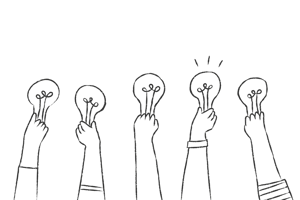The Brief Deliver events, workshops and mentoring across several Creative UK programmes and...
Unleashing the hybrid potential: Why disruptive marketers must embrace the AI‑human continuum
In today’s hyper‑competitive landscape, enterprises are racing to infuse artificial intelligence into every facet of marketing-content generation, campaign orchestration, customer segmentation. Yet, as Optimizely’s 2025 Opal AI Benchmark reveals, most organisations still struggle to translate AI’s raw power into truly differentiated customer experiences. The solution lies not in more algorithms, but in building a hybrid AI‑human continuum that blends data‑driven automation with human creativity.
1. The limits of lone‑wolf AI
AI excels at crunching numbers, spotting micro‑segments, and personalising in near real‑time. Platforms like Salesforce’s Agentforce 360 demonstrate how GPT‑5 and Claude can automate routine workflows, from drafting emails to generating on‑brand social posts . Yet without human oversight, these outputs risk generic tone, compliance pitfalls, and missed brand nuances. Optimizely’s benchmark shows that 43% of marketers believe over‑automation dilutes brand voice - evidence that AI alone can’t craft an emotional connection .
2. Introducing the creative‑AI continuum
Imagine a workflow where AI agents surface emerging consumer trends - rising interest in sustainable packaging, for instance - and human teams co‑author the narrative: crafting headlines that capture urgency and pinpointing emotive storytelling angles. This creative‑AI continuum embeds iterative feedback loops: AI adjusts on‑the‑fly based on performance metrics, while humans refine prompts, evaluate sentiment shifts, and steer campaign strategy.
3. Governance: The invisible hand
Hybrid models require governance frameworks that balance agility with control. Start by defining guardrails - ethical guidelines, compliance checkpoints, and brand standards. Implement role‑based permissions so that junior marketers can experiment with AI‑prompt templates, while senior leads approve final content. Leverage version control tools (e.g., integration into Agentforce 360) to track how AI‑generated drafts evolve into publishable assets.
4. Real‑world impact & ROI
Early adopters report up to 30% reduction in content production time and 20% uplift in engagement rates when AI assists initial drafts, and humans finalise brand messaging. Companies like Capacity (post‑Creovai acquisition) are already seeing a 15% improvement in first‑contact resolutions by combining AI analytics with human coaching sessions . The hybrid approach accelerates scale without sacrificing the empathy that drives loyalty.
5. Getting started: A roadmap
-
Audit your AI maturity: Map existing AI tools across your martech stack—CRM, content platforms, analytics.
-
Pilot a use case: Choose a high‑impact area (e.g., email subject lines) and set clear KPIs (open rates, CTR).
-
Establish cross‑functional teams: Pair data scientists with brand storytellers.
-
Deploy governance: Define approval workflows and ethical standards.
-
Iterate and scale: Use performance data to refine AI prompts and expand to new channels.
By embracing a Disruptive Thinking mindset - seeing AI not as a silver bullet but as a creative partner - marketers can unlock unprecedented personalisation at scale. The era of hybrid human‑AI collaboration is here. Will you lead the charge?




